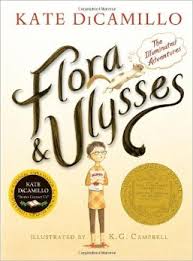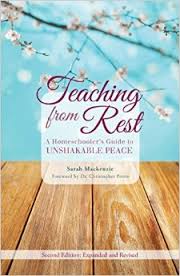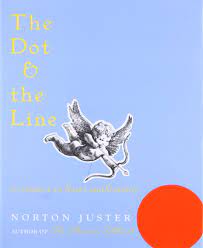FLORA -- A precocious (and self-proclaimed cynical) 10-year-old girl.
ULYSSES -- A squirrel who got sucked up by a vacuum cleaner, the survival of which event gave him powers like flying and the ability to understand and communicate
TOOTIE TICKHAM -- The neighbor, probably nosy but definitely supportive of Flora
WILLIAM SPIVEY -- not William, not Billy -- Tootie's 11-year-old nephew who unexpectedly turns up in her (and thus Flora's) life. He is suffering from temporary blindness caused by trauma.
MARY ANN -- A beautiful shepherdess keeping guard over the entry way (she's a lamp)
There are other people who support or confound Flora and Ulysses. The whole story is sort of Flora's quest or ultimate understanding of love and support. I chuckled out loud many times as I read, but I was also moved several times.
Some of the chapters start off with a comic strip panel of Ulysses' adventures, and there are a few other of K.G. Campbell's drawings throughout, which gave the story extra charm.
CONTENT NOTE:
This may seem like a cute little book with some comics throughout, appropriate for your high-reading 2nd grader. He or she could read it I'm sure, and might like it, but I believe this is a book best enjoyed when that more sophisticated sense of humor and vocabulary kicks in.
As I read it, I was surprised at the words used: "euphemistically" (which was used in contrast with literally, so maybe he figured it out), "malfeasance" (a word Flora picked up from her comic book superheroes who fight evil), and the shorter but still unfamiliar to grade-schoolers "cynic" (which is sort of defined about midway through the book).
My point is not to criticize the book, because I truly loved it, as did my boys, but to suggest to parents (teachers, librarians. aunts, grandparents) that this book might frustrate a younger or less mature child, and as a positive, that this is a book that middle schoolers would love as well if you could convince them to read it. There is also an emotional depth that will be better appreciated by more mature kids.




 RSS Feed
RSS Feed